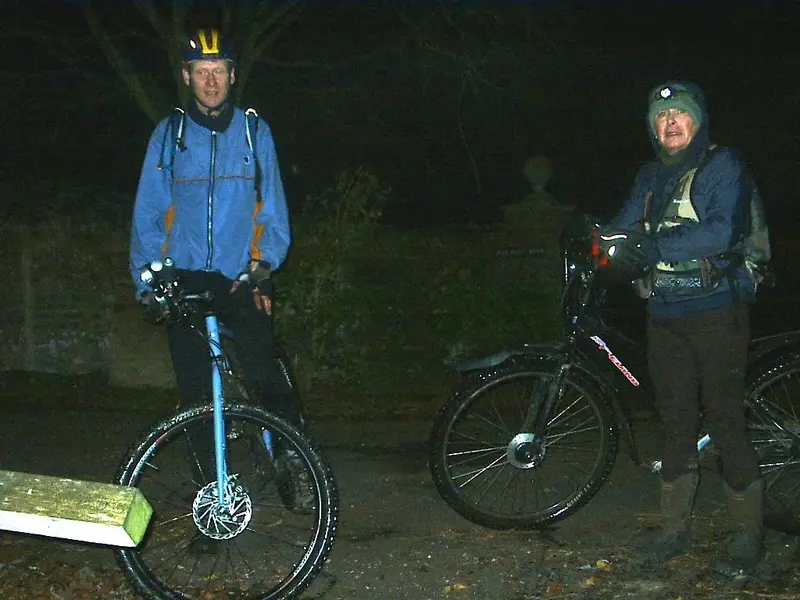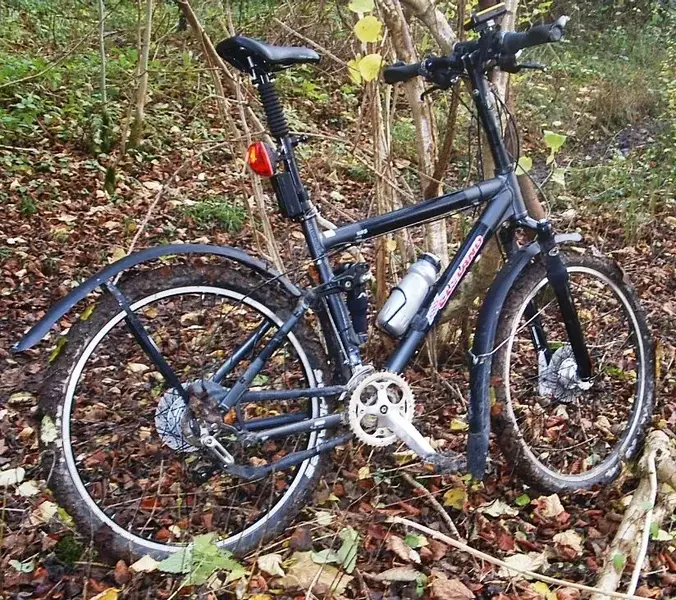- Feedback
- View
You are using an out of date browser. It may not display this or other websites correctly.
You should upgrade or use an alternative browser.
You should upgrade or use an alternative browser.
2011 Annual Cleland ride is Sunday 4th December
- Thread starter GrahamJohnWallace
- Start date
Nathanedmunds
Dirt Disciple
that full sus looks interesting . what were your problems with it? Chain growth ?
- Feedback
- View
Nathanedmunds":27dfufhz said:that full sus looks interesting . what were your problems with it? Chain growth ?
2 years ago I gave up using old style Cleland chain guards in favour of running the chain through articulated tubes. These were the first generation "Chain Choobz." Geoff's bike is using a more refined version where the square tubes are only a little larger than than the cross section of the chain.
http://www.flickr.com/photos/38236150@N ... otostream/
The full-sus bike is a "testbed" for trying out of various technologies, including the use of suspension on a Cleland style bike.
http://www.retrobike.co.uk/forum/viewto ... sc&start=0
Nathanedmunds
Dirt Disciple
I think running a system like the old G-spot with the main pivot around the BB shell. AMP style linkage forks would work better than telescopic forks.
- Feedback
- View
Pardon my ignorance but wouldn't it be better to have a dirty chain that could be cleaned / re-lubed easily rather than a cleanish chain that is hard to clean due to the chain choobz..
- Feedback
- View
REKIBorter":2zrgu3dr said:Pardon my ignorance but wouldn't it be better to have a dirty chain that could be cleaned / re-lubed easily rather than a cleanish chain that is hard to clean due to the chain choobz..
Clelands are designed for use in extremely muddy conditions where mud is scraped off the tyre by the chain or large clumps of mud can fall onto the chain from above. I have seen unprotected bikes with so much mud on the freewheel that the chain couldn't find the cogs beneath.
We used to fit aluminum plates between the tyre and chain but this a lightweight alternative. Chain choobz can be made so they can be easily removed. On the Cleland NRS they are not closed tubes but spiral strips that wrap around the chain. The chain requires cleaning far less frequently, especially if the front mudguard and mud flap are both effective. I am intending to make some square spiral chain choobz that will be narrower and neater and even easier to remove.
Re suspension types. Without disusing the relative merits of various suspension systems, this bike uses the Non Resonance System (NRS) developed by Renault Sport. The chain tension combined with preloaded springs completely stops the suspension from bobbing. The preloaded springs keep the bottom bracket high and also allows the bike to be lifted and hopped like an unsprung trials bike.
In practice this means that the NRS behaves like an unsprung bike with the suspension only moving when the bike hits a bump. The lack of negative travel means that all the positive suspension travel can be used before the suspension bottoms. And the system also works well with the low pressure tyres ability to absorb high frequency vibration.
Nathanedmunds
Dirt Disciple
I have a pronghorn frame thats a similar design as the NRS . What about belt drives? could be a good alternatives to chains for the UK
GrahamJohnWallace":3vvpw7wh said:Nathanedmunds":3vvpw7wh said:that full sus looks interesting . what were your problems with it? Chain growth ?
2 years ago I gave up using old style Cleland chain guards in favour of running the chain through articulated tubes. These were the first generation "Chain Choobz." Geoff's bike is using a more refined version where the square tubes are only a little larger than than the cross section of the chain.
http://www.flickr.com/photos/38236150@N ... otostream/
Maybe I'm coming at this from the wrong angle, but to my thinking, all those guards around the rear tyre just decrease mud clearance and are likely to lead to clogging earlier than on a bike without them, I'm looking specifically at the black guard thats wrapping round the tyre at the bottom bracket. And the 'chain choobz' just add weight surely? If the reason for keeping mud off the chain is to help it to seat on a muddy cassette, how necessary are they on a bike with no cassette?
In over 20 years of off road riding in all conditions, I can honestly say that I can count on the fingers of one hand the times that its been so muddy and I've been riding so slowly that my drivetrain has ceased working due to clogging.
I do appreciate the history behind these bikes and the work that goes into them, but I can't help but think that they're a solution looking for a problem.
stands back and waits to be flamed.
Nathanedmunds
Dirt Disciple
I've had a problem with mud riding in Margam park NPS race . just a few weeks ago when it was dryish i had a good layering of mud over my drive chain . If you see some of the pics of Geoff and co they get hub deep in mud.
- Feedback
- View
Nathanedmunds":2clx2k7k said:I have a pronghorn frame thats a similar design as the NRS . What about belt drives? could be a good alternatives to chains for the UK
Hi Nathan,
The Pronghorn rear suspension is indeed similar to the NRS in that both are Horst link systems where the chain tension pulls the rear suspension downwards and so counters the tendency to bob. Specialized "sit on" the Horst Link patent in the US, so Horst link bikes can only be made outside of America.
I believe however, that only the NRS, patented system designed to be run with zero sag. This is because physics dictates that the direction of propulsion forces is upwards from the rear axle to the combined centre of the sprung mass of the rider and bike. The upwards component of the propulsion forces will therefore try to extend any spring that is not preloaded, including the forks. To defy the laws of physics many manufacturers use a extra damping or overly stiff springs.
Belt Drive:
On the basis that the NRS suspension system is all about efficiency, to use it with a relatively inefficient belt drive would "not be logical" as MR Spock would say.
Similar threads
- Replies
- 1
- Views
- 1K
- Replies
- 0
- Views
- 1K
- Replies
- 2
- Views
- 574
- Replies
- 4
- Views
- 1K


